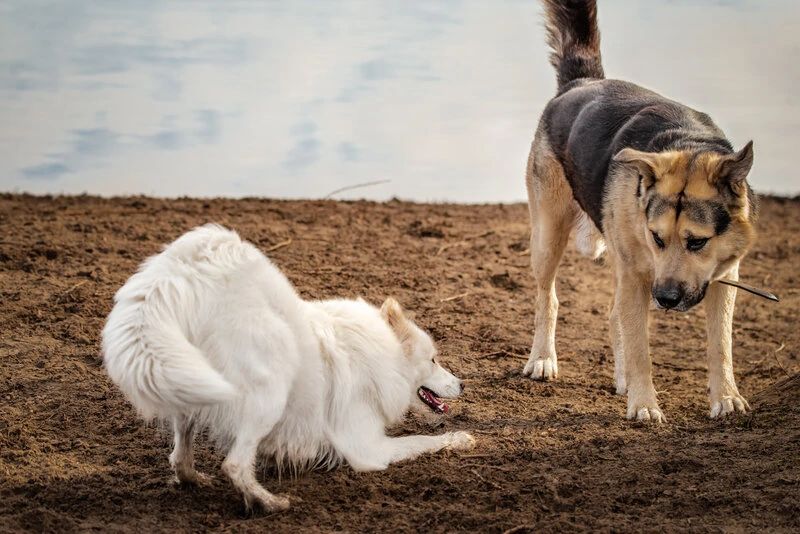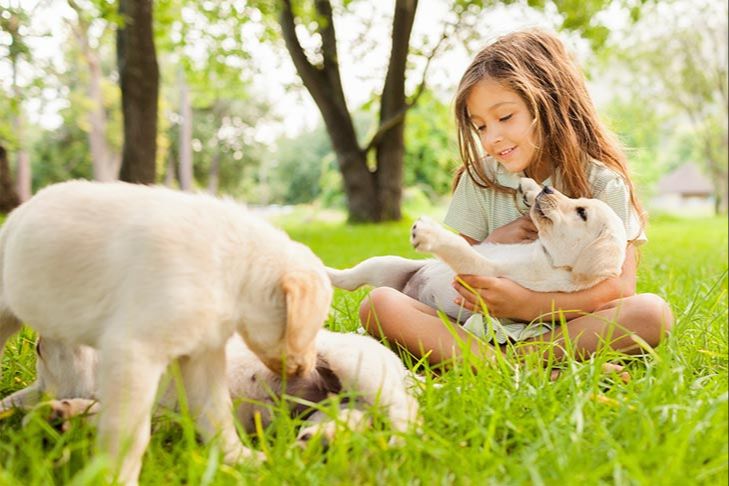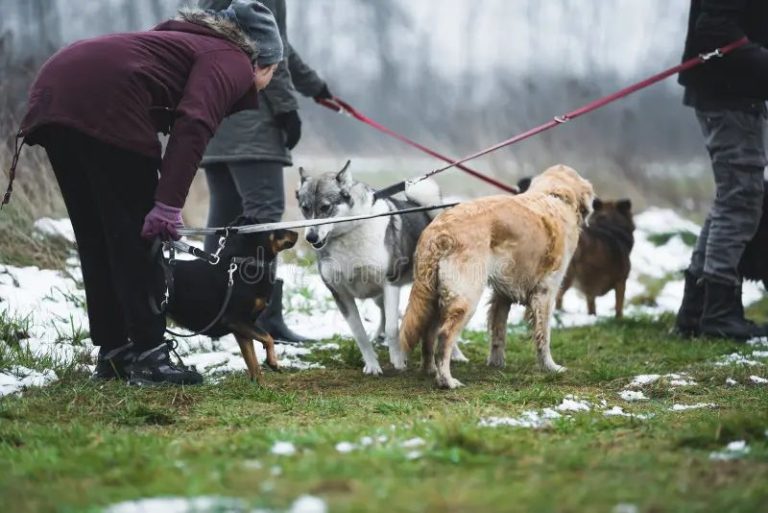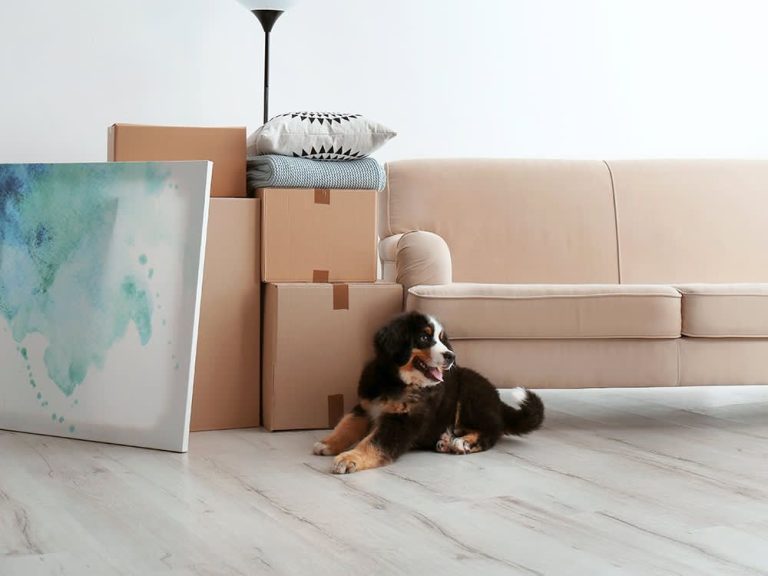Beginner’S Guide To Understanding Dog Body Language
Dog body language refers to the various ways dogs communicate through body postures, facial expressions, vocalizations, and behaviors. Understanding canine body language is critical for pet owners, trainers, and anyone interacting with dogs. Interpreting a dog’s body language allows us to understand their mood, needs, warnings, and desires. It helps promote bonds through improved communication and avoids misunderstandings that could lead to issues like growling, biting, or aggression. This guide will provide a beginner’s introduction to reading the key aspects of dog body language, such as tail wagging, ear positions, eye contact, mouth signals, vocal cues, and calming signals. With a better comprehension of canine communication, you’ll be able to understand what your dog is feeling, when they need space, when they want to play or be petted, and how to keep interactions calm and enjoyable.
Tail Wagging
A dog’s tail can communicate a wide range of emotions. In general, a tail held high and wagging in a wide motion indicates happiness and friendliness. A loose, gently swaying tail signals a relaxed and content dog. However, subtler tail movements can suggest more specific meanings.
A slow, deliberate wag with the tail lowered can indicate uncertainty. A tucked tail close to the hind legs may mean the dog is frightened, insecure, or submissive. Very fast tail wagging in tight, tiny motions often reflects a dog who is highly stimulated or aroused. And a rigid, horizontal tail with tense motions tends to signal a dog who is ready to attack or defensively threatened.1
Sometimes a dog will wag his tail while growling or showing signs of aggression. This likely indicates conflicted emotions. The dog may be feeling threatened while also hoping to avoid an actual fight. Or the tail wagging may be an attempt to relieve anxiety while warning the other dog away at the same time.
It’s important to look at the whole body and not just the tail. Ears, eyes, mouth, and body posture together give the full picture. For example, a lowered, still tail along with a relaxed body and face suggests a calm dog. But a lowered, motionless tail paired with a tense posture and stare indicates a serious threat. Knowing a dog’s habitual tail carriage and recognizing differences provides helpful insight.
1. https://vcahospitals.com/know-your-pet/interpreting-tail-wags-in-dogs
Facial Expressions
Dogs use their faces to communicate a wide range of emotions. Some common facial expressions and what they mean include:
Relaxed – When a dog is relaxed, their facial muscles will be soft and their mouth may be open with their tongue hanging out. This signals comfort and contentment. The corners of their mouth may be turned up slightly in a dog “smile.” (Source)
Tense – A tense facial expression with tightened mouth and wrinkled forehead often signals stress, anxiety, or aggression in dogs. The lips may be drawn back slightly, the nostrils flared, and the gaze focused intently. (Source)
Panting – When a dog pants with an open mouth, it is a sign they are hot, exerting themselves, or experiencing stress. Panting helps dogs cool down. (Source)
Licking – Frequent licking of the lips or nose when no food is present can signal anxiety and stress in dogs. It may be an attempt to self-soothe. (Source)
Ears
A dog’s ears are extremely expressive and can convey a wide range of emotions and intent. Erect ears indicate alertness, attention, and interest. Ears held forward signal focus, curiosity, and engagement. Pushed back ears can mean that a dog feels anxious, fearful, insecure, or submissive. Drooping or flattened ears often show sadness, insecurity, fear, or discomfort. Perked up ears convey happiness, excitement, and interest. Rapidly flicking back and forth ears communicate uncertainty and indecision.
Keep a close eye on how your dog’s ears are positioned and moving. Erect ears facing forward indicate your dog is paying close attention to something that has their interest. Pushed back ears that are flat or drooping can signal fear, anxiety, or submission, especially if accompanied by other body language like a lowered head or tail between the legs. Perked up ears facing forward communicate a dog who is alert and engaged with their environment in a positive way.
Some dogs naturally have ears that flop over or droop while other breeds have erect ears. Pay attention to what is normal for your individual dog. Noticeable changes from their natural ear carriage can provide meaningful insight into their state of mind.
According to this TikTok video, a dog’s ears tell you a lot about how they are feeling. Keeping an eye on your dog’s ear position and movement provides a valuable window into their emotions and mindset.
Eyes
Dog experts say there are multiple meanings behind a dog’s eye contact and eye movements (Dog Eye Contact, 2022)1. Prolonged, direct staring can be a sign of dominance or aggression in dogs. If a dog locks eyes and stands stiff and tall with their tail held high, this is likely a challenge. Brief eye contact can also signify that your dog is paying attention to you and interested in interacting.
As social creatures, dogs use eye contact to bond with humans and trigger oxytocin release, similar to human interactions (Bonding With Your Dog Using Eye Contact, 2022)2. Gentle eye contact while relaxing together promotes affection. However, dogs may break eye contact if they are feeling anxious, guilty, or subordinate.
Rapid darting eyes, whale eye (visible whites of eyes), and averted gaze are signs of stress in dogs (Why Do Dogs Make Eye Contact, 2022)3. Dilated pupils can also signal fear or arousal. It’s important to look at the entire body language picture to accurately read your dog’s eyes within context.
Mouth
A dog’s mouth and tongue can give clear insight into what they are feeling. Lip licking shows nervousness as the dog is dealing with uncertainty [1]. Yawning signals stress since a tense situation causes fatigue in dogs [2]. Panting helps regulate a dog’s body temperature, but can also indicate happiness, excitement, or anxiety [3]. Bared teeth demonstrate aggression in most contexts, warning others to back away [3]. Reading a dog’s mouth cues provides insight into their emotional state.
Body Posture
A dog’s body posture can reveal a lot about how it is feeling. Here are some key things to look for:
Standing tall with head held high and ears pricked forward often indicates confidence, assertiveness, and/or excitement. Lowered body postures with ears back can suggest fear, anxiety or submission.
A play bow with front legs stretched out and hindquarters in the air usually means a dog is feeling playful and friendly. This is an invitation to play.

Rolling over to expose the belly is a sign of submission. However, some experts warn this can also be a precursor to biting when the dog feels threatened, so caution is advised.
Crouching with tail tucked between legs is a clear sign the dog feels scared or anxious. Slow movements and gentle reassurance is recommended.
A stiff, puffed up body with tail held high can signal arousal, fear or aggression – context is important.
Overall, a relaxed body posture with a gently wagging or neutral tail is a good sign the dog feels comfortable and content.
Vocalizations
Dogs use a wide range of vocalizations to communicate different messages. Some of the most common vocal signals are:
Barking – Dogs may bark to express alarm, boredom, loneliness, attention-seeking, or to demand something. A dog’s bark can indicate happiness, fear, or threats. High-pitched rapid barking often signals playfulness or excitement. Low, growling barks may indicate suspicion or aggression (source).
Growling – Growls communicate different meanings depending on context. Playful growls signal fun and enjoyment. Warning growls indicate irritation or “back off.” Defensive growls communicate imminent aggression or bite (source).
Whining – Dogs may whine when excited, anxious, lonely, stressed, afraid, in pain, or needing to go to the bathroom. Puppies often whine for attention. Excessive whining should be addressed.
Howling – Howling is thought to help dogs communicate over long distances. It can signal loneliness, defense of territory, initiating play or establishing social rank. Some dogs howl along with noises.
Calming Signals
Calming signals are canine communication behaviors used to appease and calm a dog’s perceived threat. These subtle cues send the message that the dog is uncomfortable and wants to avoid conflict. Dogs use calming signals to signal to other dogs and humans that they want to disengage from a stressful interaction. Some common calming signals include:
Yawning: Yawning when not tired is a calming signal, especially when exaggerated and exposing the teeth. It signals that the dog is trying to avoid confrontation and defuse tension.
Lip licking: When a dog licks its lips when there is no food around, it is sending the message that it is feeling unsure and trying to appease a perceived threat. Lip licking shows nervousness.
Turning away: When a dog turns its head or entire body away, it is demonstrating that it wants to remove itself from an uncomfortable interaction. Turning away can diffuse a tense situation.
Sniffing: Sudden sniffing of the ground signals a dog’s interest in disengaging and distracted itself from a perceived threat. It demonstrates the dog is avoiding eye contact.
Shaking off: When a dog shakes as if trying to get water off its coat, it is releasing anxiety and stress. Shaking off calms the dog down and can de-escalate a situation.
Understanding calming signals allows owners to intervene before situations escalate with their dogs. Paying attention to these appeasement cues creates a safer environment for canine-human interactions.
Conclusion
Understanding your dog’s body language is crucial for building a strong bond and ensuring their health and happiness. In this beginner’s guide, we covered the main ways dogs communicate nonverbally through their tails, faces, ears, eyes, mouths, vocalizations, and body postures.
Key takeaways include:
- A wagging tail does not always mean a happy dog. Look at tail height and motion to better understand your dog’s emotional state.
- Relaxed facial muscles and soft eyes typically indicate a calm, comfortable dog, while a tense mouth and whale eyes can signal stress or fear.
- Erect ears facing forward often demonstrate attention, while ears pinned back may communicate aggression or anxiety.
- Calming signals like lip licking, yawning, and averting gaze show your dog is uncomfortable and needs more space.
Reading and understanding your dog’s body language allows you to better meet their needs and prevent misunderstandings that lead to behavior issues. Always stay alert to your dog’s signals, and if unsure, consult a qualified professional. With patience and compassion, you can build an even stronger bond with your furry friend.






